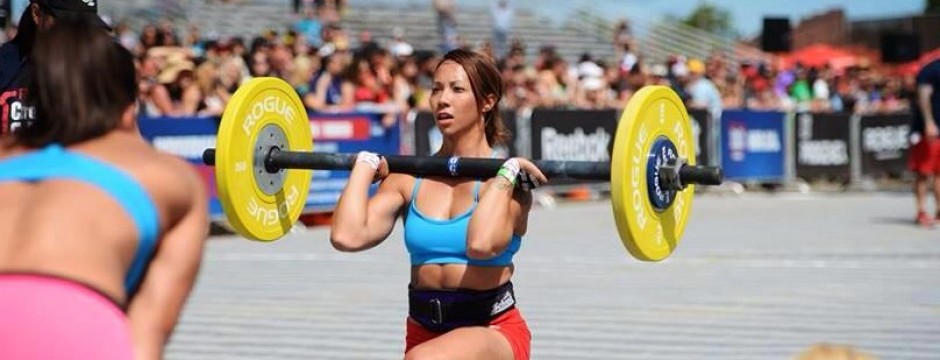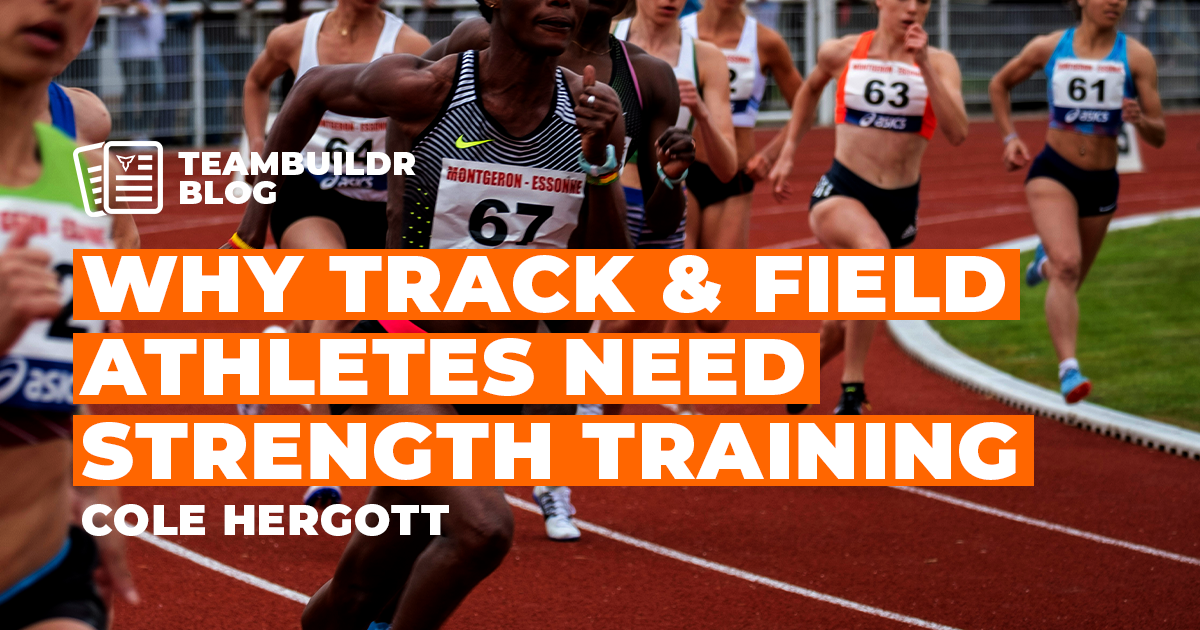The Single Biggest Key to Developing Speed in Youth Athletes
This article is meant to explain the program at The King’s Academy used to systematically develop speed in youth athletes.
(Image Source: Personal Trainer Pioneer)
Practicing a Speed Development System
When it comes to agility and speed training for youth athletes, I tend to see many youth coaches out there making some common mistakes. The first mistake I see is coaches doing way too much. I also see coaches constantly running athletes through cone drills and agility ladders and calling it “speed work” or “agility training.” As an industry, we need to take a step back as sport performance coaches and really look at what athletes need to be coached from a linear speed standpoint and multi-directional standpoint. Once we do that, we can start by teaching the basic movements that our athletes need to effectively and efficiently move fast. This is done by choosing and improving the movements that will affect the majority of our athletes and their sports. This is the same concept that coaches implement in the weight room. For example, we know the lower body presses and pulls, the upper body presses and pulls and we categorize these movements in order to practice a balanced approach. The same approach should be used outside the weight room when it comes to speed development. Below are my “big four” movements that I teach to my athletes. I have 2 categories: linear speed and lateral/multi directional speed and each category has two movements for a total of 4 movement types.
Linear Speed
- Acceleration
- Absolute
Lateral/Multi Speed
- Shuffle
- SpeedCross-Over
These are the four primary movements coaches should focus on for performance development; anything outside of these four movements would consider the job of the sport coach. There are many other movements that are specific to each sport that the sport coaches or position coaches should be responsible for teaching. The job of a performance coach is to build “all around” athleticism, it is not our job to specialize.
The Need for A System
Once the “big four” are realized, then a system can be developed for speed and agility coaching. Most coaches are able to tell you what system they use in the weight room whether it be the tier system, APRE, or 5-3-1. However, many cannot define a framework for their youth speed training program. It’s normal for coaches to be more comfortable with weight room development as education in our industry is biased towards that component (among other reasons) but performance coaches must be well-rounded in today’s competitive environment - and more importantly, it is owed to the athletes that we provide competent coaching in all areas.
As a reminder, performance coaches build “all around” athleticism, it is not our job to turn our kids into powerlifters, olympic lifters or bodybuilders. The weight room makes for better athletes and helps to reduce the risk of injury, but teaching movement skills is the best way to transfer physical development onto the playing surface. I believe teaching movements skills such as acceleration and change of direction is going to “bridge the gap” between the weight room and sport better than anything else. The single best way to effectively development movement skills is through the use of a system.
Here is the system I currently used which was developed at my time with EXOS:
- Technical
- Pre-Programmed
- Random
This model accounts for the time of year my athletes are in and it also determine what a single session looks like. For example, in the very beginning of each semester I will spend the majority of my speed sessions working on technical work for the movement we are trying to pattern that day. Also, no matter what time of year it is, each movement session will begin with technical work and “work into random” as the semester progresses. For example, at the start of a new semester we may spend the first 20 minutes of the session working on technical drills that will prepare the body to move the way we want it to and spend 10 minutes on pre-programmed drills with no random drills at all. Towards the end of a semester we will spend very little time working on technique and spend the majority of our time in pre-programmed drills and we will do some random drill every session. Spending all semester in technical and pre-programmed drills would not prepare our athletes for sport where athletes are expected to respond to external stimuli with the correct movement pattern as quickly as possible. On the other hand, spending all semester in random drills and not teaching the fundamental movements will result in faulty movements, risk of injury and lack of overall development.
The Warm-Up
Our system varies the warm-up daily depending on the focus for the day and seamlessly blends into the movement we are trying to develop that day. The warm-up consists of four components that help get our athletes’ bodies ready to work on our session’s movements.
- Glute Activation
- Dynamic Flexibility
- Movement Integration
- Neural Activation
Glute activation is done in this system with mini-bands and/or glute bridges. Dynamic flexibility is where athletes go through a dynamic warm-up, “world’s greatest stretch,” reverse lunge with a rotation, bear crawls, etc. Movement integration is where the body prepares to go through the motor programming used in the coming speed session. This is where marching and skipping comes in to play. At the end of the warm-up, the athlete’s central nervous system is engaged and ready to perform by doing some fast feet drill or agility ladder.
Technical
Technical work directly follows the warm-up. Again, the time spent in this phase depends on the age group and the time of year. For this articles example, let’s choose the “acceleration” movement and break down the model used within this system. Technical work is always going to be some sort of wall drill or very low-level drill aimed at building context for the next movement. It will also let the athletes feel how they should be moving. Below is an example of an acceleration wall drill. Many coaches are familiar with this drill, but it’s often used without context for their athletes and the drill turns out looking like a waste of time. This drill requires precision which means a performance coach should know how to assess and correct the athletes who are not meeting that criteria, but that is for another post. Make it a priority to let athletes understand why this drill is important and how it is going to transfer into the next drill.
Another way to do technical work that will transfer very well to the actual movement of acceleration is bungee or band resisted marching and skipping. These drills prepare the athletes body for the demands of the pre-programmed drills.
Pre-Programmed
Pre-programmed drills are considered the actual movement for the day but athletes are not yet reacting to an external stimulus. This means the athlete is doing the actual work of acceleration with knowing exactly when and where the drill begins and ends. In other words, athletes are not responding to a whistle or a “go” call like they would in a competitive situation. In the example of acceleration, this would be something like a five or ten yard sprint where the athlete can start the drill on their own signal. The goal of this phase is to try to take the technical work and actually use it in a movement drill. If they can do this properly they may be ready to move on to random work. Sometimes it takes weeks or months before the athletes are ready to use the correct technique in a random drill. However, once athletes achieve this, they will be likely using the correct techniques during competition.
Random
Random drills are considered the highest level within this system and are essential for transfer to sport. Every team sport requires an athlete to react to an external stimulus very quickly while using good technique and movement strategies. The inability to do this can lead to poor performance or injury. Here is one example of a random acceleration drill but there are many out there to choose from.
Conclusion
This is a system - or teaching model - that I use currently and used with EXOS to teach movement skills that transfer to all sports. Whether a coach decides to use this specific system, they should have some kind of system around how to teach movement. Notice that we only covered acceleration in this post but there are more movement types that could have been used as an example.
If you’re interested in learning more, I recommend engaging in a mentorship, checking out Altis, reading and watching everything by Lee Taft, or getting the online XPS certification from EXOS. Finally, I recommend doing things outside of your comfort zone in order to make yourself a better, well-rounded performance coach.
Subscribe to our blog
Subscribe to receive the latest blog posts to your inbox every week.
Related posts

Build Game-Breaking Speed With This Exercise
.jpg)
Don't Skip Conditioning, Redefine It

